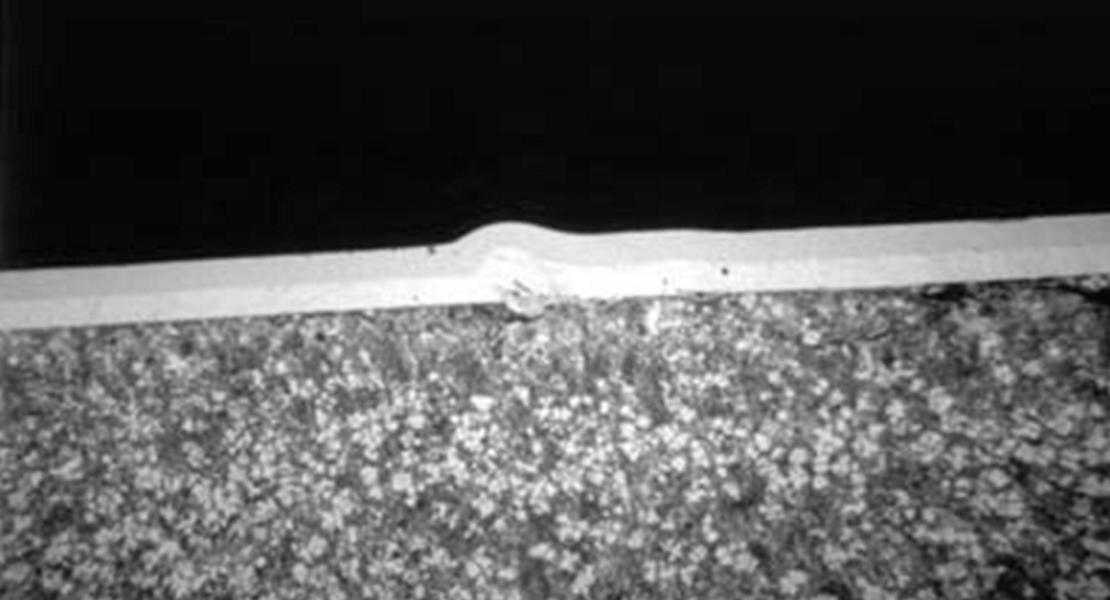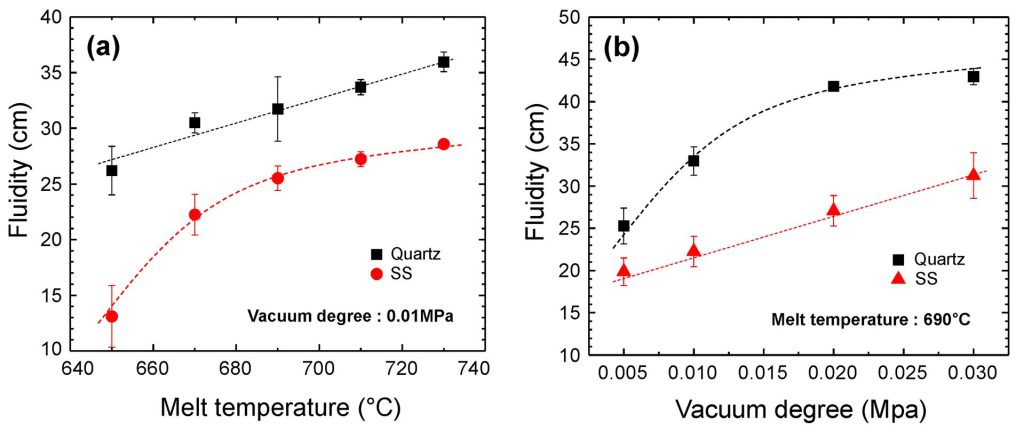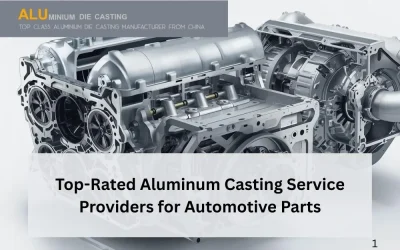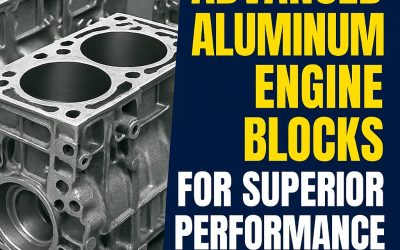Aluminum is a lightweight material. That poses excellent corrosion resistance. Because of this, it is a focused choice across miscellaneous industries. It comes with a wide array of alloy grades. Each aluminum die casting alloy indicates diverse attributes. That varies from their functionality.
Determining the suitable material selection is pivotal. It facilitates the manufacturing process. Additionally, it caters to achieving the sought-after output result.
Learn their exhaustive characteristics, influencing factors, and applications in this article. That is the most important aspect when selecting the appropriate material.
Common Aluminum Die Casting Material Alloys
Because the selection of material directly impacts the manufacturing processes or the final products. Therefore, it is necessary to choose them wisely while weighing their different attributes.
Every aluminum alloy provides certain properties. That may be prone to specific products or somewhat less prone to others.
Discover the breakdown of the following alloys. They are commonly used in high-pressure die-casting.
- A380 Aluminum Alloy
- A356 Aluminum Alloy
- A383 Aluminum Alloy
- A413 Aluminum Alloy
- A360 Aluminum Alloy
- Alloy 43
- B390 Alloy
A380 Aluminum Alloy
A 380 aluminum alloy is the material. That is primarily used in several industries. It contains excellent corrosion resistance qualities. This material is specifically used to make intricate parts with tough geomatics.
It offers great mechanical strength and good tensile characteristics. This alloy is immaculate for producing long-lasting applications. That is exposed to harsh environments.
Its strength does not let it wear out quickly. Moreover, manufacturers can easily machine, weld, or repair this material as compared to others.
Advantages
- Provide excellent corrosion resistance properties, especially for outdoor applications, like roofing and cladding.
- Its durability is efficient enough to withstand extreme operational temperatures.
- It can be used for lightweight products to improve functionality.
- A380 alloy fluidity contributes to producing complex shapes and thinner walls.
- It provides effective machinability.
Disadvantages
- Expensive and difficult to recycle
- Have lower melting and are not suitable for heavy-loading products.
- It often causes hot cracking and porosity.
A356 Aluminum Alloy
Aluminum alloy 356 is optimal for use in aerospace or industrial sectors. With good tensile strength, it provides a good combination of components.
Besides this, it has excellent corrosion resistance and castability features. That makes it a suitable choice for creating durable products.
This material is easily available. It is the preferred material where performance and weight reduction are concerns.
Advantages
- It possesses high strength. That is appropriate for heavy-load applications.
- Alloy A356 comprises adequate weldability attributes.
- It proposes excellent elasticity with no loss of strength.
- Its high durability and strength feature enables wear resistance quality.
- It delivers excellent fluidity for casting.
Disadvantages
- This material is expensive and causes a darker shade of aluminum while anodizing.
- Its electrical conductivity reduces when using natural aging on properties of heat.
A383 Aluminum Alloy
A 383 aluminum is an impressive grade. That is specifically used for making complex parts with precision shapes. The manufacturer can fill the molds with an A380. That is slightly better than the A380.
Being a good heat conductor, it delivers excellent strength under high temperatures. This alloy does not crack in challenging environments. However, consumers found it costly and less durable than the A380 and A356.
Advantages
- This is a lightweight material.
- It presents higher corrosion resistance.
- The A383 alloy possesses higher oxidation resistance.
- It is suitable for complicated die-casting projects.
- This material is affordable and easy to cast.
Disadvantages
- It is less durable than the 380 alloys of aluminum.
- It sometimes causes brittleness involving rapid cooling and cracking.
- This alloy provides limited high-temperature performance.
A413 Aluminum Alloy
A413 alloy is preferred for its high-strength tightness. Applications like hydraulic components can be produced with this alloy. It effectively provides a leak-resistance shield to all products.
This material also provides good corrosion resistance for the application. That involves the heat dissipation. It highly responds to die-casting parameters.
A413 alloy provides excellent machineability and strength-to-weight ratio. Therefore, the diecasters choose them for their projects. That needs high strength.
Advantages
- This alloy can resist high pressure with no breaking loss and bending.
- It comprises high strength-to-weight ratio attributes.
- A413 furnishes hot cracking resistance.
- This is the best material for casting complex geometric shapes.
- It delivers superior fluidity as well as balanced conduction and heat aspects.
Disadvantages
- It is pricey compared to the A383 alloy.
- This material does not retain purity.
- It has lower tensile strength than others.
A360 Aluminum Alloy
The excellent ductility, strength, and corrosion resistance attributes of aluminum alloy A360 distinguish it from other materials. It is efficacious in producing parts with amazing fluidity and pressure tightness. That attracts many die-casters.
It encloses superior pressure tightness compared to aluminum alloy A380. In addition, they exhibit great fluidity during casting. That makes the mold process easier. Because of this, die casters can produce parts with detailed shapes.
Advantages
- It entitles to high-precision casting processes.
- This alloy holds excellent ductility and corrosion-resistant features.
- It supplies dimensional stability.
- Manufacturers can adopt this alloy where high mechanical strength is required for high temperatures.
- It additionally offers machinability and durability for the automotive and aircraft industries.
Disadvantages
- It is more expensive than steel.
- It requires surface finishes and easily scratches.
- This alloy is not easy to cast.
- It does not glow red before reaching the heating temperature.
Alloy 43
The alloy 43 is not easily available. Somewhat this material is not commonly used in manufacturing due to its moderate corrosion resistance feature. However, it provides high flexibility and is suitable for producing marine products.
Advantages
- Provide flexibility propeits.
- Poses good strength
- It is cost-effective and easily available.
Disadvantages
- It is difficult to machine
- This material can be brittle, leading to cracking.
- It provides limited corrosion resistance.
B390 Alloy
If you are about to produce products with high bearing ability, you must go with B390 alloy. This material is preferable for creating pistons, pumps, and brake systems. That requires wear resistance.
However, it causes difficulties during machining and aggressiveness on die-cast tools.
Advantages
- It has lower melting points compared to others.
- Provide ductility and rigid properties.
- It offers remarkable conductivity.
- This alloy contains high recycling attributes with casting fluidity features.
Disadvantages
- It is more difficult to anodize
- Poses lower ductility
- Less corrosion-resistant and mechanical properties
- It requires safe handling procedures.
- It can cause wear to the die cavity and melting furnaces under high heat temperatures.
Properties of Alloys Impacting the Output Result
You must be familiar with the several characteristics and challenges of alloys. That will aid you in determining the required material for your projects.
Additionally, the wrong material selection may create faults in the final products. For instance, leakage, inappropriate shapes, or less functionality.
Following is a common characteristic of aluminum alloys. That may impact the production.
- Strength-to-Weight Ratio
- Corrosion Resistance
- Thermal Conductivity
- Machinability
Strength-to-Weight Ratio
The different alloys of aluminum are essential in every sector as they provide an excellent strength-to-weight ratio. Aluminum alloy’s lightweight feature can enhance the functionality of applications and reduce their fuel consumption. This consideration is effective for producing particular applications where weight is a concern.
Corrosion Resistance
Aluminum alloys are highly preferable for resisting corrosion. The material produces protective layers of oxide on the surface. That helps in reducing rust and degradation in harsh situations.
Several applications, especially for buildings, households, and automotive, involve exposure to moisture. Therefore, manufacturers can ensure the longevity of these parts. For this, they can choose alloys with excellent corrosion resistance attributes. For instance, a 380 or a 356.
Thermal Conductivity
Aluminum alloys provide indispensable thermal conductivity. That is beneficial for producing the parts while managing heat without risking strength. Choose the material that delivers good thermal conductivity for your projects. For instance, in high-temperature applications like heat sinks and engine systems.
Machinability
Different alloys of aluminum work differently when exposed to die-casting processes or even drilling. Some of them will be hard to machine, and some will make your work flawless. So, choose the alloy that easily bends in the mold to create intricate shapes.
Properties of Alloys Impacting the Casting Process
The material you prefer for casting can also affect the process in several ways. It can cause trouble during manufacturing.
- Hot Cracking
- Die Soldering
Hot Cracking
Hot cracking in the die-casting process also refers to soldering cracking. It is a typical defect for aluminum alloys. It can result in internal or surface-level tears. The alloys that are attributed to thermal-induced internal stress often cause defects. These materials are more susceptible to hot cracking than others. However, alloys with higher ductility, like a 360, help reduce hot cracking.
Die Soldering
Die soldering is another defect that is caused during the die-casting process. The alloys stick to the wall of the die and trouble the ejection process. It badly damages the cast and dies. So, look for an alloy that contains anti-soldering features.
Factors Influencing Alloy Selection for Die Casting
The perfect manufacturing process begins when you select the material, weighing its distinctive properties. Some applications are subject to constant flexibility. That is why consider the following aspects before choosing the alloy:
- Mechanical and Physical Properties
- Fluidity
- Protection from corrosion
- Cost-effectiveness and manufacturing
Mechanical and Physical Properties
Consider the mechanical and physical features of the material. That involves strength, hardness, ductility, etc. These characteristics define the workability of alloys under stress.
Fluidity
High fluidity is necessary for applications where precision is critical. It is another crucial aspect. The selected alloy must flow well into the mold. So that it can fill complex shapes without defects. This aspect is prone to producing parts with detailed shapes and intricate designs.
Protection from Corrosion
Aluminum alloys with excellent corrosion-resistant ability will have a longer lifespan. It reduces the repair and maintenance costs.
Cost-effectiveness and manufacturing
The cost of metal significantly influences the manufacturing process and overall budget. These are the practical considerations. Similarly, efficient manufacturing processes affect the total cost of production. That may also include cycle time and scrape rates.
Comprehensive Comparison of Aluminum Die-Casting Alloys
Here is a comprehensive comparison of aluminum die-casting alloys. That will give a clear picture of the differences in their properties.
| Property | A380 Alloy | A356 Alloy | A383 Alloy | A413 Alloy | A360 Alloy | Alloy 43 | B390 Alloy |
| Density (g/cm³) | 2.71 | 2.68 | 2.74 | 2.66 | 2.63 | 2.80 | 2.80 |
| Melting Range (°C) | 540–595 | 555-615 | 516-582 | 573-613 | 557-596 | 525-595 | 510-595 |
| Electrical Conductivity (% IACS) | 27 | 36 | 23 | 35 | 30 | 21 | 22 |
| Thermal Conductivity (W/m·K) | 96.2 | 110 | 96.2 | 117 | 113 | 92 | 109 |
| Ultimate Tensile Strength (MPa) | 320 | 250 | 310 | 320 | 320 | 300 | 390 |
| Yield Strength (MPa) | 160 | 175 | 150 | 160 | 170 | 140 | 250 |
| Hardness (BHN) | 80 | 65 | 75 | 75 | 75 | 70 | 90 |
| Fatigue Strength (MPa) | 140 | 95 | 145 | 95 | 120 | 120 | 125 |
| Shear Strength (MPa) | 190 | 150 | 190 | 180 | 180 | 185 | 210 |
| Elongation (%) | 3.5 | 7.0 | 3.5 | 3.5 | 3.5 | 3.0 | 1.0 |
Applications of Aluminum Alloys in Die Casting
Aluminum-based materials are extensively used in numerous industries. Their lightweight and high-strength differentiae are beneficial for critical parts. They offer both strength and fuel efficiency in structural applications. Here are a few applications of these alloys. That is mentioned in the table below:
| Alloy | Key Properties | Applications | Industries |
| A380 Alloy | Good mechanical properties, pressure tightness | Engine blocks, transmission housings, gearboxes | Automotive industry |
| A360 Alloy | High corrosion resistance, pressure tightness | Structural components, casings, engine covers | Automotive, industrial equipment |
| A356 Alloy | Superior flexibility, strength-to-weight ratio | Chassis, wheels, structural parts | Automotive, industrial machinery |
| A383 Alloy | Dimensional stability, castability | Electronic enclosures, housings, connectors | Electronics, consumer goods |
| A413 Alloy | High thermal conductivity, pressure tightness | Heat sinks, hydraulic components, engine covers | Electronics, automotive |
| Alloy 43 | Good corrosion resistance, moderate strength | Outdoor equipment, structural parts, consumer electronics | Industrial equipment, consumer goods |
| B390 Alloy | Excellent wear resistance, low elasticity | High-performance engine parts, transmission components, heat sinks | Automotive, electronics, industrial equipment |
Conclusion:
Aluminum alloys offer a wide range of usefulness across multiple industries. They provide distinctive characteristics. Each of them is crucial to meeting the specifications of the required parts. The determination of materials is significantly based on their characteristics. Therefore, understanding them deeply may help the aluminum diecasters. It guides them in going forward with the acquisition of material.








0 Comments